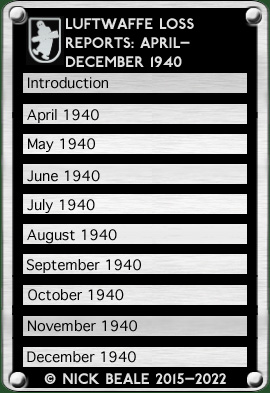
|
||
|
Much has been written about the Battles of France and Britain, little if any of it based on a message-by-message trawl of the Ultra reports for the relevant months. The German Blitzkrieg in the West had been underway for 12 days before Bletchley Park achieved its first regular breaks into German machine cipher traffic on that front. Prior to that, there was substantial material from the Norwegian campaign. My impression of the material I’ve seen is that its significance is only going to be apparent to someone who already has a very detailed knowledge of the period (i.e. someone other than me). The aim of this article is, in the first instance, to put out some information that others may find useful. I may annotate more of the entries later, as far as my (fairly limited) references on the period allow. Another point worth making is that these were early days, British analysis and interpretation of the material improved as experience was gained and as the whole “special intelligence” apparatus expanded. Reporting formats would also get better, leaving less ambiguity over the day under discussion and giving the times that messages were intercepted and deciphered versions issued. Except where you see quotation marks, I haven’t reproduced the decrypts verbatim but paraphrased them somewhat for the sake of clarity. Occasionally it has been necessary to infer which date is being referred to: for example if a decrypt issued at 0600 hours on the 15th says "at 1000 hours" then I have taken this to mean 1000 on the 14th. Messerschmitt aircraft are named as in the originals which showed no consistency over the use of Bf and Me. The principal sources for this article are National Archives files HW5/1 – HW5/5 and online resources such as the deZeng/Stankey officer career summaries and airfield lists at ww2.dk and naval-history.net. Annotations I've made are in square brackets. 9 April An He 111 P of 9./KG 4 (W.Nr. 1587, 5J+HT) left Sylt for an attack on Bergen and was still missing four weeks later. Of those aboard, Ltn. Gerhard Haarnagel, Fw. Heinz Peters and Hptm. Rudolf Weyhrauch and Fw. Heinz Peters are buried in Bergen, having apparently crashed at Bomelĝ. There is no war grave information on Uffz. Merz and Fw. Weisz, the other crew members. 10 April Nine He 111 of KG 4 landed at “Stadhagen (near Stavanger)”. One of these had bullet damage but the crew was unhurt. By the following morning one aircraft was reported missing, along with an NCO and 12 men; apparently one of the Ju 52 involved in the transfer. In a British raid on Stavanger during the afternoon, a Ju 52 was burned out and an He 59 shot down, with one man wounded. A message deciphered nine days raised this assessment to four He 59 as total losses and two He 115 with floats damaged by splinters. In Oslo, no fewer than 10 Ju 52 and four He 111 P crashed on landing and were damaged between 20 and 50% but there were no facilities or personnel there to repair them. There had also been crashes the day before and it was noted that since the aerodrome was very small, heavy braking was necessary, leading to burst tyres. 14 April "5L+AK" of 2./KG 4 had its rudder control shot through and made a forced landing in Oslo.
16 April The 1./Küstenfliegergruppe 106 reported a strength of 7 (3) aircraft and two days later foresaw the move of its three “undamaged” machines to “Meby”. At noon on the 18th the order came through for the Staffel to transfer to Norderney 17 April 5J+FT of 9./KG 4 was reported missing. 18 April An He 111 landing at Oslo destroyed two aircraft, N3+BY and GH+AG as well as damaging CF+IF (80%) and AD+AR (35%), leaving Hptm. Werner Panitzki’s transport Staffel with only five serviceable machines. 19 April The bombing of Stavanger [presumably that of the 10th by a lone 254 Sqn. Blenheim, or the raid next day by Wellingtons and Blenheims] had alarmed the High Command, and the British learned on this date that Generaloberst Milch had visited the scene. Aircraft NR+AL damaged by bombs and machine gun fire at Narvik. (Ju 52? Date uncertain, may be 18 April). 20 April A deciphered message disclosed that Bv 138, Bv 139, Do 24 and Do 26 flying between Travemünde, Stavanger, Bergen and Narvik have been repeatedly fired at by their own Flak, despite giving the necessary recognition signals. In consequence a number of Flak units had been reprimanded. Five days later there was concern that the Allies might use Danish Fw 200 aircraft commandeered in London and that German gunners would not recognise them as hostile. [One such airliner, OY-DAM, Dania, was taken over and used as a transport first by BOAC, then the RAF]. continued on next page …
|
|||||

